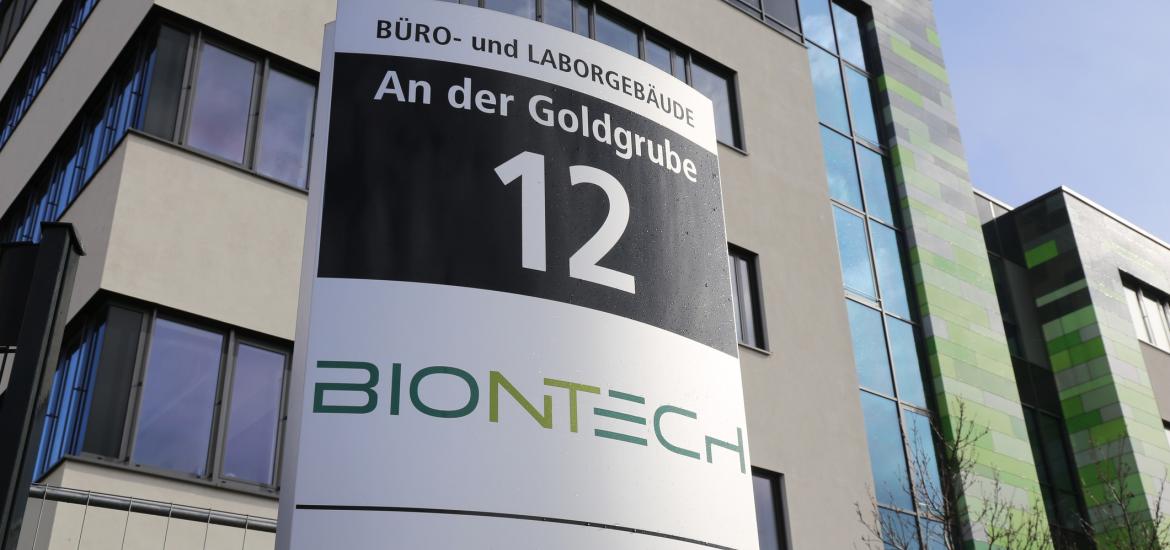
We haven't lost focus, BioNTech insists
The company defends its cancer strategy, and says it's not a me-too developer.
The company defends its cancer strategy, and says it's not a me-too developer.

BioNTech is keen to prove that it’s more than just a Covid vaccine developer, with its chief medical officer, Özlem Türeci, attending the 2024 ASCO meeting after a long absence. The company, which was in cancer before Covid-19 was even known about, has more recently been busy expanding here through deals, notably in the ADC arena.
When asked by ApexOnco if such efforts risked resulting in a loss of focus for BioNTech, which is most famous for mRNA immunotherapies, Türeci replied: “We have not moved away from our mRNA focus. We’re still there.”
BioNTech has long been in cell therapy, with its Claudin6-targeting Car-T project BNT211, and in immuno-oncology. But just sticking with this wasn't enough, Türeci said: “We have expanded in immuno-oncology, and ADCs are new to us, because we see that they will transform oncology. We want to have that under our control.”
Me too?
BioNTech might also be criticised for pursuing the same targets others are working on. Examples include HER2, TROP2 and B7-H3, via ADCs licensed from DualityBio; HER3, with a Medilink-partnered ADC; and CTLA-4, through an OncoC4-originated MAb.
But Türeci contended that it wasn't just the target that was important – particularly with ADCs. “ADCs against the same target can be highly differentiated, by the linker technology, the toxin, the antibody – how it binds, the affinity, the cross-reactivity against off-tumour structures.”
“We have to show in the clinical development how differentiated our molecule is.”
BioNTech’s notable asset-focused recent deals
| Date | Partner | Project(s) | Terms |
|---|---|---|---|
| Nov 2023 | Biotheus* | BNT327/PM8002 (PD-L1 x VEGF bispecific) | $55m up front |
| Oct 2023 | Medilink | BNT326/YL202 (HER3 ADC) | $70m up front |
| Aug 2023 | DualityBio** | BNT325/DB-1305 (TROP2 ADC) | Undisclosed |
| Apr 2023 | DualityBio | BNT323/DB-1303 (HER2 ADC); BNT324/DB-1311 (B7H3 ADC) | $170m up front |
| Mar 2023 | OncoC4 | BNT316/ONC-392 (anti-CTLA4 Mab) | $200m up front |
Notes: *followed research collaboration in Jul 2023; **expansion of Apr 2023 deal. Source: OncologyPipeline.
An example of such differentiation could be BioNTech’s Genmab-partnered PD-L1 x 4-1BB bispecific acasunlimab. Other similarly acting projects have fallen by the wayside, most recently Inhibrx’s INBRX-105, but at ASCO acasunlimab produced impressive overall survival, when combined with Keytruda, in post-PD-(L)1 NSCLC.
All such bispecifics are designed to be conditionally activated: both arms of the antibody have to bind to trigger agonism on 4-1BB and antagonism on PD-L1. The acasunlimab data suggest that perhaps BioNTech and Genmab have found the secret sauce here in terms of balancing the activities of the MAb's various elements.
“It wasn’t easy to get this conditional activation pattern installed," Türeci explained. "Conditional isn’t a binary situation – it’s a fluid concept. It’s difficult to use experiences from one of these antibodies to draw conclusions to the other.”
On the other hand, it seems strange that a bispecific that hits PD-L1 would need to be combined with a PD-1 inhibitor, and while the Keytruda combo looked good acasunlimab monotherapy had lacklustre efficacy. Türeci explained that acasunlimab had been optimised to hit 4-1BB, meaning that it “does not fully capture all PD-L1s. So we give PD-(L)1 on top to also get the maximum effect here.”
One reason for caution with acasunlimab is liver toxicity, but Türeci noted that this had been expected, owing to the project’s action on the 4-1BB co-stimulatory pathway, and in any case should be manageable, with steroids for example.
With phase 3 development of acasunlimab in second-line NSCLC due to start by year-end, this will soon be put to the test.
Well anchored?
BioNTech is also developing BNT327, an anti-PD-L1 x VEGF bispecific, a theme that became hot over the ASCO weekend following intriguing data from Summit and Akeso’s ivonescimab.
However, the PD-(L)1 part of the two bispecifics reveals a notable difference: ivonescimab hits PD-1, the protein found on T cells, while BNT327 hits PD-L1, expressed on tumours.
This could turn out to be important if Türeci's theory about the safety advantage of such bispecifics comes to pass. “The PD-L1 (targeting) arm is like an anchor in the tumour bed,” she explained. This means that bispecifics with this mechanism hit VEGF “very specifically” within the tumour, which could limit off-target toxicity – a problem with the anti-VEGF MAb Avastin in lung cancer.
In second-line EGFR-mutated NSCLC efficacy with ivonescimab plus chemo in the Chinese Harmoni-A trial looked in line with that seen in Orient-31, a study that tested a similar regimen but using separate antibodies: Innovent’s PD-1 inhibitor sintilimab plus the Avastin biosimilar Byvasda.
Rates of grade 3 or higher treatment-related adverse events were similar in Harmoni-A and Orient-31, at 54% and 56% respectively, but there were six possibly treatment-related deaths in Orient-31, versus none in Harmoni-A.
If it's difficult to tell whether this bispecific approach is translating into lower tox, but there are positive hints for BioNTech. ASCO saw Chinese phase 1/2 data on BNT327 (PM8002), which BioNTech licensed from China’s Biotheus last year; in NSCLC grade 3 or higher treatment-related adverse events occurred in just 20% of patients.
BioNTech has said it plans to start global trials this year, putting it some way behind Summit, whose ivonescimab is already in phase 3 in the US.
BioNTech's big 2024 readout will be from the Imcode-001 study of its Roche-partnered personalised mRNA-based immunotherapy autogene cevumeran in first-line melanoma.
However, this has been delayed several times, so perhaps it’s little wonder that BioNTech is spreading its oncology bets.
2650













